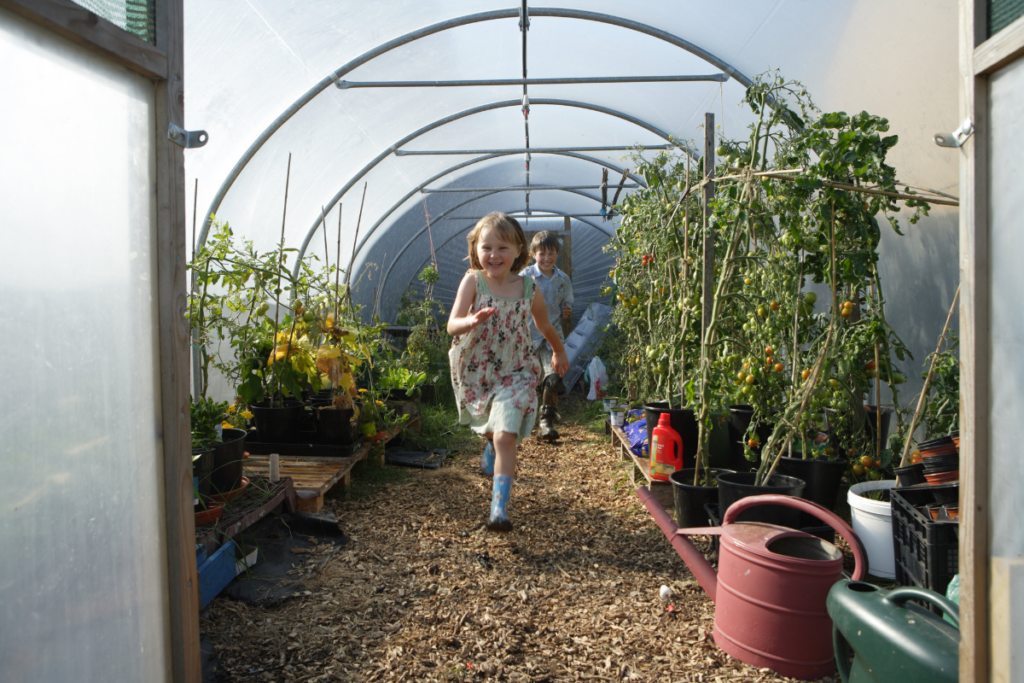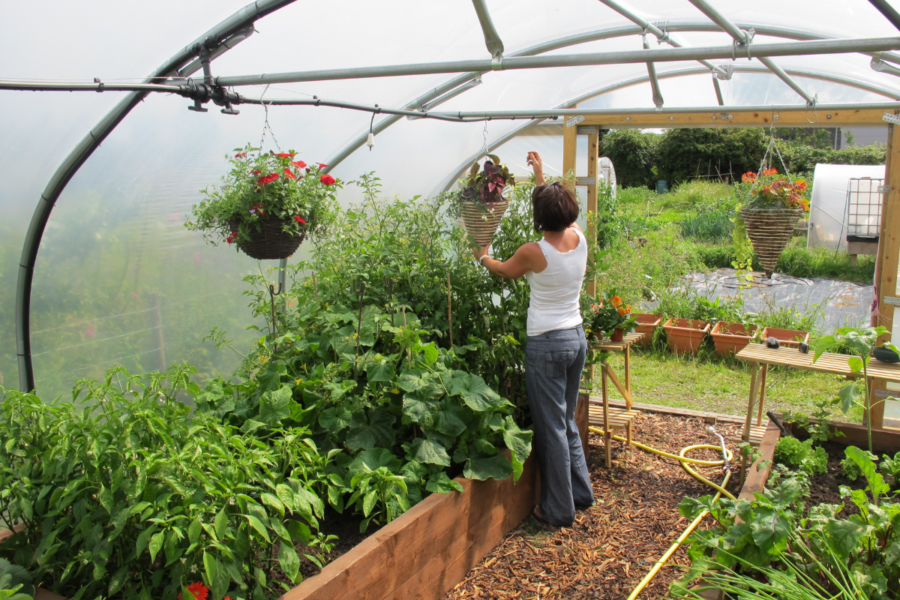Becky Searle explains the many benefits of these undercover spaces
There are few things that evoke that “kid on Christmas morning” levels of excitement when you’re an adult, but getting a brand new polytunnel is definitely one of them. As thoughts turn to all the wonderful things you can now grow whatever-the-weather. Tomato vines groaning with fruit, watermelons the size of your head and enough loofahs to fill a whole bathtub. You can now enjoy a mug of tea and listen to the rain falling outside safe in the knowledge that you can carry on gardening regardless.

My polytunnel is my haven. When I walk inside, the world around me fades away, and it’s just me and my plants. Besides being a wonderful place to hide from your family, or take shelter during showers, polytunnels are incredible growing spaces. As they can be placed directly onto bare earth, grass or a hardstanding space. They cost less than greenhouses to buy and they are extremely versatile too.
A polytunnel will heat up during the day, far surpassing outside temperatures, and hold onto its warmth as temperatures outside start to drop. Increased temperatures mean increased growth rates, and they mean that we can extend the season for plants that are sensitive to the cold. Chillis, for example, need a long growing season. They need warmth to germinate and grow, and they will not tolerate low temperatures. Naturally, they grow in countries that accommodate their particular needs. So, when we want to grow them in this country, we have to manipulate the conditions to suit them. The same can be said for many crops, and even those that are tolerant of the cold will grow faster inside a polytunnel because the warmth helps to power the chemical reactions inside the plant that fuels growth.

A well-built polytunnel with tight plastic skin is surprisingly robust against strong winds and will offer your plants valuable protection all year round. This means that if you want to grow the perfect dinnerplate dahlia for the local flower show, you can bet it won’t be battered by rain and wind just at the critical moment!
Important polytunnel considerations
Know that sufficient ventilation is key
So doors and side vents are very useful. Polytunnels will get very warm in the summer very quickly so it’s essential to have cooling airflow, and sometimes some shading so that plants don’t suffer from heat stress, and to help prevent humidity-loving pathogens such as blight from taking hold.

Think about irrigation
Make sure that you can keep up with the watering inside your tunnel. Using compost mulches and a no-dig approach can help the soil retain water, so you need to water less, and automatic watering systems can help look after your plants when you’re not on hand

Find more tips, advice and articles like this at the Amateur Gardening website. Subscribe to Amateur Gardening magazine now.





